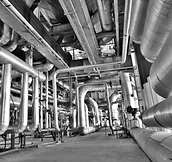Engineering and Technology Quarterly Reviews
ISSN 2622-9374




Published: 10 May 2022
Comparison of H.264 and H.265
Milan Jayaratne, Pulasthi Dhananjaya Gunawardhana, Uthpala Samarathunga
University of Sri Jayewardenapura, Sri Lanka

Download Full-Text Pdf
10.5281/zenodo.6531466
Pages: 17-24
Keywords: H.264, H.265, Entropy Coding, Transformation & Quantization
Abstract
From the Stone Age to the present day, visual communication can be described as a form of communication that has evolved over various topics, from design to technology. As a result of globalization and the transformation of digital citizenship, services such as the Internet have come into the world. With the advent of mobile phones, computers, and television, more and more people are viewing and sharing videos, the need for a lower cost and higher quality methodology. The H.264 standard was successfully introduced in 2003 as another answer to that problem. The H.264 standard, which supported 1920 x 1080 Full HD resolutions, was no longer more practical than 4K resolutions. A decade later, with the introduction of the H265 in 2013, video usage became even more efficient. This was introduced with the combination of MPEG and ITU-T. H.265 codex mostly targets higher resolution video, such as 4k and 8k. Thru this paper, we are looking into the comparison of the technology used in H.264 and H.265. Specially H.264 and H.265 workflow, Transformation and Quantization techniques used, coding Units, Entropy Coding methods, etc. The quality of the output video is expected to be well preserved to the point where the frame concealment algorithm proposed leaves a very little negative impact on the video
References
A. Abramowski, "Towards H.265 video coding standard," Photonics Applications in Astronomy, Communications, Industry, and High-Energy Physics Experiments 2011, DOI: 10.1117/12.905583.
"Advanced video coding for generic audiovisual services", Recommendation ITU-T H.264 [Online].2016. Available: https://www.itu.int/ITU-T/recommendations/rec.aspx?rec=13189.
C.-Y. K. Y.-L. L. Jian-Wen Chen, "Introduction to H.264 advanced video coding," Proceedings of the 2006 conference on Asia South Pacific design automation - ASP-DAC '06, 2006. ISBN: 0-7803-9451-8-/06. https://bunker2.zlibcdn.com/dtoken/901c8067304b524b0c0d610c0a3469fa
D. M. Vivienne Sze, "Entropy Coding in HEVC," Integrated Circuits and Systems, pp. 209-274, 2014. DOI: 10.1007/978-3-319-06895-4_8. https://studylib.net/doc/12703372/entropy-coding-in-hevc-please-share
D. R. Bull, "The Block-Based Hybrid Video Codec," Communicating Pictures, pp. 291-316. 2014. ISBN: 9780124059061
J. J. Y. L. Cai Mian, "An H.264 Video Encryption Algorithm Based On Entropy Coding," Third International Conference on Intelligent Information Hiding and Multimedia Signal Processing (IIH-MSP 2007), 2007. DOI: 10.1109/IIH-MSP.2007.86. https://www.computer.org/csdl/proceedings-article/iih-msp/2007/29940041/12OmNBhZ4kj
J.-R. O. W.-J. H. T. W. Gary J. Sullivan, "Overview of the High-Efficiency Video Coding (HEVC) Standard," IEEE Transactions on Circuits and Systems for Video Technology, vol. 22, no. 12, pp. 1649-1668, 2012. ISSN: 1051-8215. DOI: 10.1109/TCSVT.2012.2221191
M. B. G. J. S. Vivienne Sze, High-Efficiency Video Coding (HEVC) - Algorithms and Architectures, London: Springer International Publishing Switzerland, 2014. ISBN: 978-3319068947.
M. B. Vivienne Sze, "High Throughput CABAC Entropy Coding in HEVC," IEEE Transactions on Circuits and Systems for Video Technology, vol. 22, no. 12, pp. 1778-1791, 2012. DOI:10.1109/TCSVT.2012.2221526. http://www.mit.edu/~sze/papers/sze_tcsvt_2012.pdf
P. A. L. A. L. A. d. S. C. Guilherme Correa, "Four-step algorithm for early termination in HEVC inter-frame prediction based on decision trees," 2014 IEEE Visual Communications and Image Processing Conference, 2014. DOI: 10.1109/VCIP.2014.7051505. https://ieeexplore.ieee.org/document/7051505
P. C. a. J. S. L. Hanzo, Video Compression and Communications, Wiley, 2007. ISBN: 978-0-470-51849-6.
R. W. J. W. Dawen Xu, "Prediction mode modulated data-hiding algorithm for H.264/AVC," Journal of Real-Time Image Processing, no. 4, pp. 205-214, 7. 2010. ISSN: 1861-8200. DOI: 10.1007/s11554-010-0175-4
T.-A. L. T.-M. L. a. C.-Y. L. Sheng-Zen Wang, "A New Motion Compensation Design for H.264/AVC Decoder," 2005 IEEE International Symposium on Circuits and Systems. ISBN: 0-7803-8834-8. DOI: 10.1109/ISCAS.2005.1465646. https://ieeexplore.ieee.org/document/1465646
V. M. V. Farooq Sunar Mahammad, "A Study On H.26x Family Of Video Streaming Compression Techniques," International Journal of Pure and Applied Mathematics, vol. Volume 117 No.10, no. Special, p. 63, 2017. ISSN: 4-3395.DOI: 10.12732/ijpam.v117i10.12. https://acadpubl.eu/jsi/2017-117-8-10/articles/10/12.pdf
